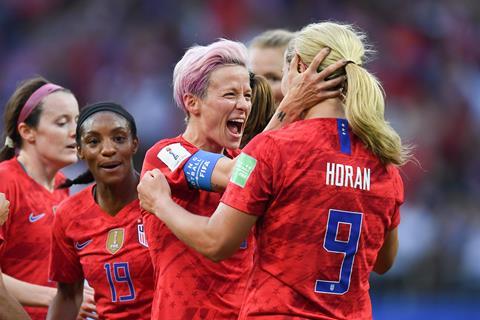- Women’s sport on screen is set to increase by 94%
- Instagram (59%) and Facebook (44%) are the leading social platforms for engagement
- 62% of senior sports industry executives said they expect more of their women’s sports content to be distributed via OTT platforms

The digital age is driving women’s sport to the forefront of distribution with social and digital platforms leading the boost at 84% of output.
Some 94% of industry professionals are primed to increase the investment across the supply chain of women’s sport on-screen, according to the SaaS video management platform organisation Imagen.
The research found that of the social and digital platforms, 36% of these were used exclusively while only 2% would solely use traditional broadcasting.
- Read more: BBC to “change the game” for women’s sport
The survey included more than 300 senior sports industry executives found that this development is predominately being motivated by increased investment and commercial interest at 29% and the new opportunities for digital distribution at 25%.
While over half (52%) of all interested and engaged audiences are driven by social media platforms.
The report outlined the social media platforms which are proving the most popular, with the highest engagement in women’s sport from Instagram at 59% followed by Facebook at 44%.
Imagen head of sport Will Pitt said: “To satisfy and capitalise on evolving audience demand for women’s sport, sports federations, governing bodies, leagues and clubs need to ensure they can meet these needs and make the content easily accessible.”
- Read more: Encouraging women in sports production
Nearly 62% of senior sports industry executives surveyed said they expect more of their women’s sports content to be distributed via OTT platforms and social media in the future.
Similarly, almost half of respondents said their organisation is investing or planning to invest in the launch of a dedicated direct-to-consumer (D2C) streaming product, thereby increasing access to women’s sport.
The D2C trend has gathered momentum in recent years, particularly among niche sports, with a number of sports federations creating their own platforms to share content and reach wider audiences.
Pitt added: “Changes in viewing habits mean viewers are not just relying on broadcasters to air the content they want to watch on TV, evidenced by the 433 million views on the official FIFA Women’s World Cup digital channels this year.
“2019 has been a significant year for women’s sport in terms of exposure, viewership and growth. Crucially, younger, digitally savvy audiences are helping to fuel this rise.”
























No comments yet